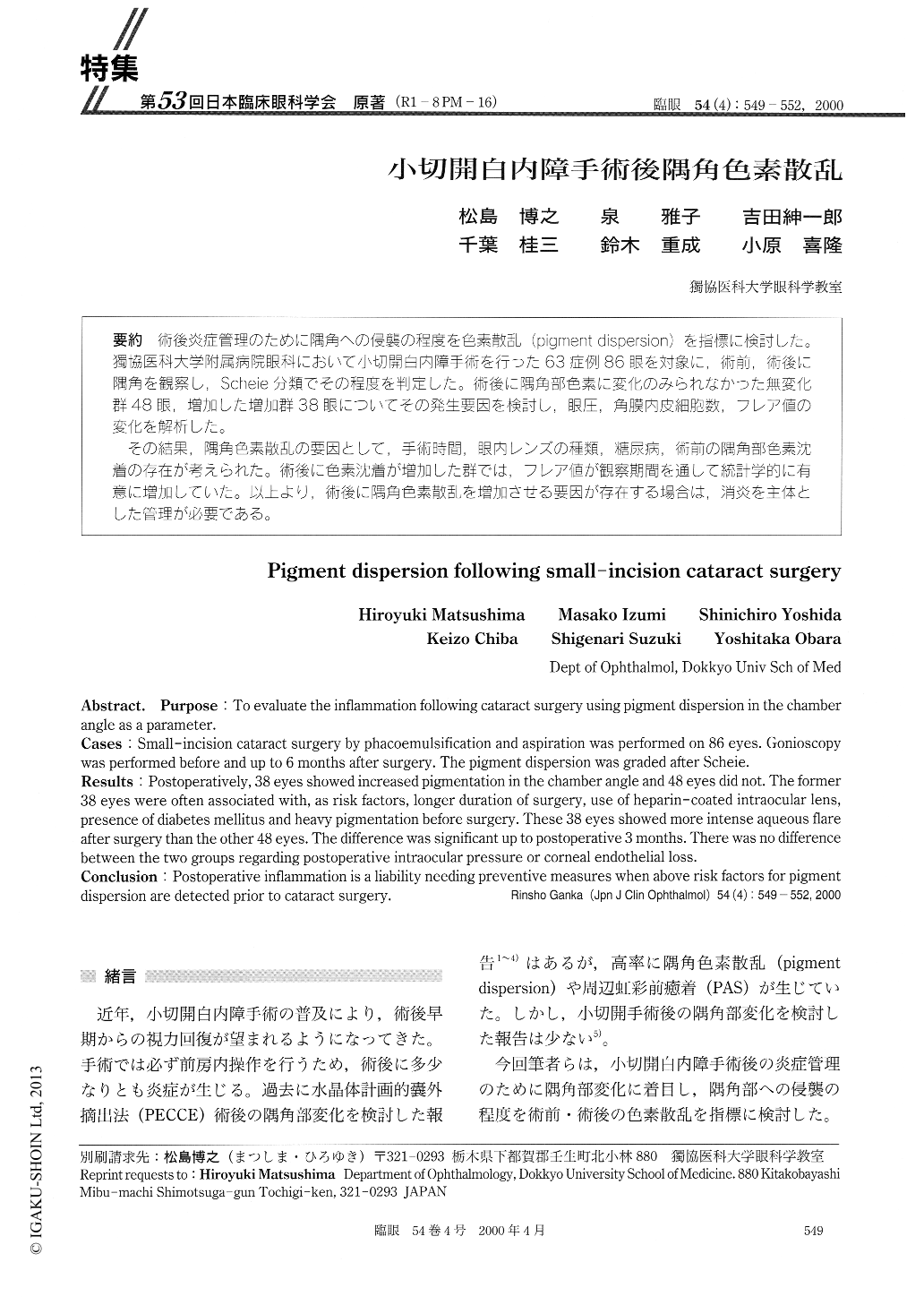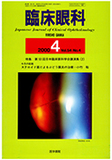Japanese
English
- 有料閲覧
- Abstract 文献概要
- 1ページ目 Look Inside
(R1-8PM-16) 術後炎症管理のために隅角への侵襲の程度を色素散乱(pigment dispersion)を指標に検討した。獨協医科大学附属病院眼科において小切開白内障手術を行った63症例86眼を対象に,術前,術後に隅角を観察し,Scheie分類でその程度を判定した。術後に隅角部色素に変化のみられなかった無変化群48眼,増加した増加群38眼についてその発生要因を検討し,眼圧,角膜内皮細胞数フレア値の変化を解析した。
その結果,隅角色素散乱の要因として,手術時間,眼内レンズの種類,糖尿病,術前の隅角部色素沈着の存在が考えられた。術後に色素沈着が増加した群では,フレア値が観察期間を通して統計学的に有意に増加していた。以上より,術後に隅角色素散乱を増加させる要因が存在する場合は,消炎を主体とした管理が必要である。
Purpose : To evaluate the inflammation following cataract surgery using pigment dispersion in the chamber angle as a parameter.
Cases : Small-incision cataract surgery by phacoemulsification and aspiration was performed on 86 eyes. Gonioscopy was performed before and up to 6 months after surgery. The pigment dispersion was graded after Scheie.
Results : Postoperatively, 38 eyes showed increased pigmentation in the chamber angle and 48 eyes did not. The former 38 eyes were often associated with, as risk factors, longer duration of surgery, use of heparin-coated intraocular lens, presence of diabetes mellitus and heavy pigmentation before surgery. These 38 eyes showed more intense aqueous flare after surgery than the other 48 eyes. The difference was significant up to postoperative 3 months. There was no difference between the two groups regarding postoperative intraocular pressure or corneal endothelial loss.
Conclusion : Postoperative inflammation is a liability needing preventive measures when above risk factors for pigment dispersion are detected prior to cataract surgery.

Copyright © 2000, Igaku-Shoin Ltd. All rights reserved.


